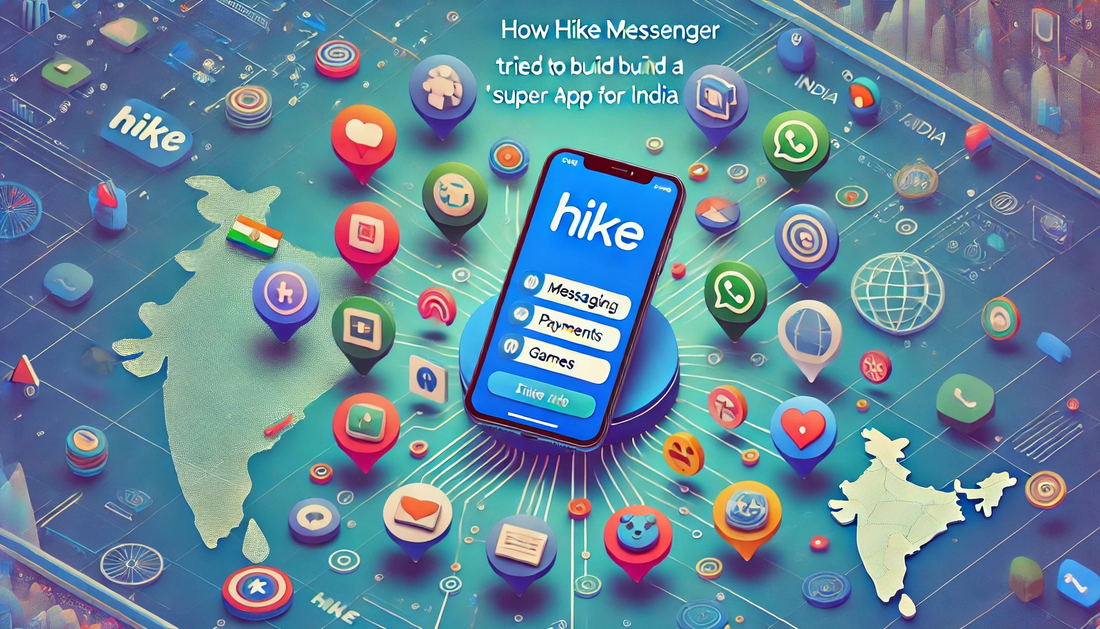In the bustling world of messaging apps, Hike Messenger emerged as a unique player with a bold vision: to create a 'super app' for India. Founded in 2012 by Kavin Bharti Mittal, Hike aimed to revolutionize the way Indians communicated.
Hike's journey is a treasure trove of lessons for startup founders. It’s a story of ambition, innovation, and the relentless pursuit of a dream. Let’s dive into how Hike attempted to build a super app and what startups can learn from it.
Understanding the Indian Market
India is a diverse and complex market. Hike understood this from the get-go. They tailored their app to cater to the unique needs of Indian users, offering features like regional stickers and offline messaging.
Actionable takeaway: Know your audience. Conduct thorough market research to understand the cultural nuances and preferences of your target demographic.
Building a Unique Value Proposition
Hike differentiated itself with features like privacy options, hidden chats, and a wide array of stickers. These features resonated with young Indians, setting Hike apart from global competitors like WhatsApp.
Actionable takeaway: Identify what makes your product unique. Focus on features that solve specific problems for your users, creating a compelling reason for them to choose your app.
Expanding Beyond Messaging
Hike's vision was to become more than just a messaging app. They introduced features like Hike Wallet, games, and news, aiming to create an ecosystem where users could fulfill multiple needs within one app.
Actionable takeaway: Consider how your product can evolve. Explore opportunities to expand your offerings, creating a comprehensive solution that keeps users engaged within your ecosystem.
Leveraging Strategic Partnerships
Hike partnered with companies like Airtel and Ola to enhance its offerings. These collaborations allowed Hike to integrate services like mobile recharges and cab bookings, enriching the user experience.
Actionable takeaway: Forge strategic partnerships that complement your product. Collaborations can help you offer more value to your users and expand your reach.
Focusing on User Engagement
Hike invested heavily in user engagement. They introduced features like Hike Direct, allowing users to chat offline, and Hike Stories, a feature similar to Instagram Stories, to keep users hooked.
Actionable takeaway: Prioritize user engagement. Continuously innovate and introduce features that keep your users coming back for more.
Adapting to Challenges
Despite its innovative approach, Hike faced challenges. The dominance of WhatsApp and the complexity of building a super app in a competitive market were significant hurdles.
Actionable takeaway: Be prepared to adapt. The startup journey is fraught with challenges. Stay agile and be ready to pivot when necessary.
Learning from Setbacks
In 2021, Hike announced the shutdown of its messaging app. However, this was not the end. The company pivoted to focus on new ventures like Vibe and Rush, showcasing resilience and adaptability.
Actionable takeaway: Embrace failure as a learning opportunity. Use setbacks as a stepping stone to innovate and explore new avenues.
Creating a Strong Brand Identity
Hike's branding was youthful and vibrant, resonating with its target audience. The app's design and marketing campaigns were tailored to appeal to young Indians.
Actionable takeaway: Build a strong brand identity. Ensure your branding aligns with your target audience's values and preferences.
Investing in Technology
Hike invested in cutting-edge technology to enhance its app's performance and security. This commitment to technology was crucial in maintaining user trust and satisfaction.
Actionable takeaway: Invest in technology. Ensure your app is secure, fast, and reliable to provide a seamless user experience.
Conclusion: The Legacy of Hike
Hike's journey is a testament to the power of innovation and resilience. While the super app dream faced challenges, the lessons learned are invaluable for any startup founder.
As you embark on your entrepreneurial journey, remember Hike's story. Embrace innovation, understand your market, and never shy away from adapting to change. The path to success is paved with lessons from those who dared to dream big.










